Ask Allie: Going Corporate With Color
Hi Allie,
I've just started an internship in the technology section of a large investment bank and have been wrestling with what to wear. Do you think that colourful clothes are acceptable in a business environment if the silhouette and material is formal? The dress code for my team is fairly business casual. However, we were advised on the first day that “you should not express your creativity through your outfit” and the other interns are sticking to a palette of black, white, grey and nude. Whilst I don't want to look like a cartoon character, or have people think I look inappropriate, I also don't want to be a faceless corporate clone.In summary, do you think it's acceptable to wear colour in a corporate environment? Or should I be sticking to black and neutrals and focusing on using the odd colourful accessory through which to express my personality?Thanks, Emily
Hi Emily,
Like you I gravitate towards color, I find it flatters my skin and also my mood! I have worked in creative departments, and very conservative departments. I have attended conferences and business meetings with some of the most conservative government agencies, financial institutions, and private corporations. And I have always worn a bit of color and never had a negative reaction. While I wouldn’t meet with Department of Defense in a fuchsia suit with chartreuse blouse and leopard heels, I wouldn’t think twice about pairing a teal wrap dress with plum pumps or a Pucci-inspired blouse with a teal pencil skirt.
Color in the Workplace (Click Image to See Larger)
Top Row L to R: Shen Dove Style, 9-5 Chic, Big Girl Small Budget Tiny Town, A Girl in Boston
Bottom Tow L to R: It's My Cardi, Academichic, ByHillary, BiblioMOMia
I think asking you to, “not express your creativity through your outfit” I think they mean more what items you wear, than what color you wear. In such a field I would steer clear of leather, lace, daytime sequins, short skirts, obvious logos, really wild shoes, neon colors, and drastic fashion trends. However, since there aren’t more specific rules (I have worked for companies who have gotten far more specific in regard to closed-toe shoes, hose, jackets for certain types of events, etc.) I think color would be refreshing, and would likely inspire your colleagues to follow suit by adding color to their wardrobe.
My current workplace is business casual (no one wears suits, men usually in chinos and polos), but I work in an office where we regularly host conventions and meetings, have visits from government agencies and our corporate team, and attend meetings offsite where we interact with high-powered government officials. I have made the decision to keep my attire usually on the more formal side of business casual so I can attend a last-minute meeting without having to scramble to an Ann Taylor on my lunch hour. I keep prints to a minimum because they can be a bit overwhelming in a sea of black and gray, but don’t shy from wearing it just on my blouse, or just on my skirt. I keep the really strong colors (electric, neon, and saturated primaries) to a minimum when meeting with clients, using them as a shell with a subtle-colored suit, a shell under a cardigan, a skinny belt.
Do know that certain colors affect people in different ways. My mom was a schoolteacher for many years and still substitutes a couple times a week. She chooses to not wear “angry colors” because she doesn’t wish to agitate the teenagers in the classroom. Depending on your position, it may be wise to consider how the colors you wear affect those around you. A few popular colors and their psychological effect:
Red: Red is associated with fire and blood, war, danger, power, as well as passion and love. Red is an emotionally intense color; it speeds up the metabolism, increases respiration rate, and raises blood pressure. Many find red to be an “angry” or “power” color.
Pink: Pink, a lighter shade of red, helps muscles relax and denotes feminine qualities. Pink has the opposite effect of red, making one feel calm, protected, warm and nurtured.
Orange: Orange combines the energy of red and the happiness of yellow. It has shown to have positive effects on one’s emotional state; it increases oxygen supply to the brain, and stimulates mental activity.
Yellow: Yellow produces a warming effect, stimulates mental activity, and generates muscle energy. Like orange, yellow is a happy and uplifting color. It can also be associated with intellectual thinking: discernment, memory, clear thinking, decision-making and good judgment. Men often perceive yellow as a very lighthearted, ‘childish' color. Yellow can also seen as a spontaneous color, so avoid using it if you want to suggest stability and safety.
Green: Green is the most restful color for the human eye; it relaxes our muscles and helps us breathe deeper and slower. Green is associated with nature, health and money.
Blue: Blue is the most popular and neutral color on the color wheel. Blue proves to lower blood pressure and give feelings of security and peace. According to studies, blue is the most popular and most accepted color among males. Navy or dark blue is associated with depth, expertise, and stability; it is a preferred color for corporate arenas. Like yellow, blue inspires mental control, clarity and creativity.
Purple: Purples have been used in the care of mental of nervous disorders because they have shown to help balance the mind and transform obsessions and fears. Purple combines the stability of blue and the energy of red; it symbolizes power, nobility, luxury, and ambition. Surveys show that almost 75 percent of pre-adolescent children prefer purple to any other color.
Brown: Brown brings feelings of stability and security. Brown also can denote masculine qualities.
White: White brings feelings of peace and comfort. However, too much white can feel cold and isolating.
Black: Black denotes strength and authority; it is considered to be a very formal, elegant, and prestigious color. Black is also seen as passive and can make one think you fear growth and change. Combined with red, orange and other powerful colors, black gives a very aggressive color scheme.
Gray: Gray is a color of independence and self-reliance. Gray also can indicate separation, lack of involvement and loneliness.
You were chosen for this position because of who you are, and color is part of that. I usually add a pop of color when on interviews to show my personality, and I always wear a typical “Allie” on my first day of work so they know what to expect (for my first day at this job I wore a teal boatneck sweater, black pencil skirt, and leopard print heels). Start off slow with just a brightly-colored shell or cardigan and see what reaction you receive. I’m betting it will be positive!

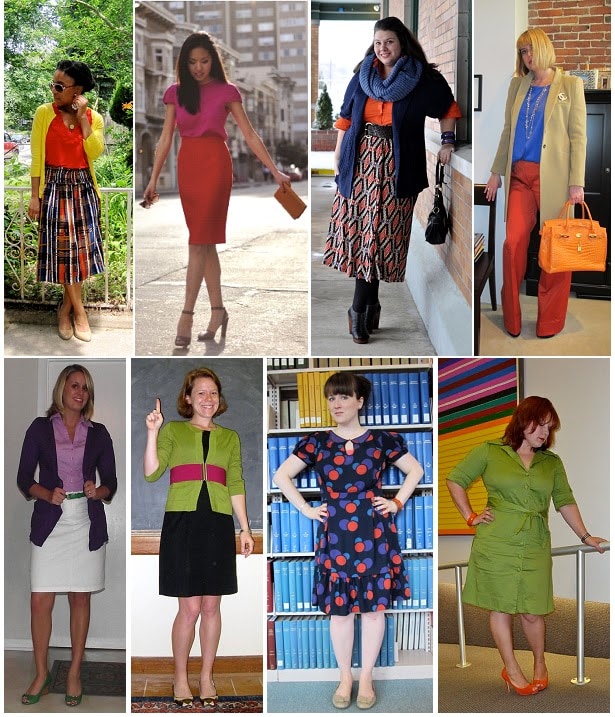
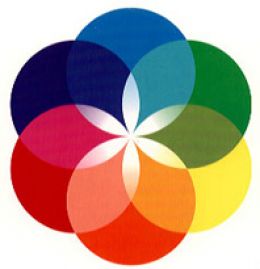
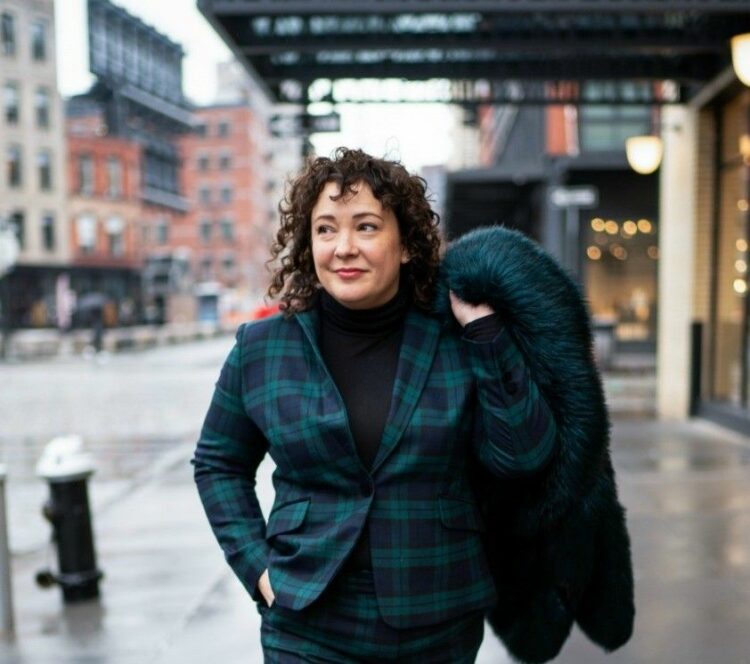

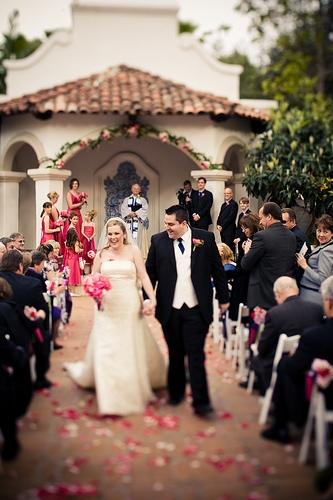

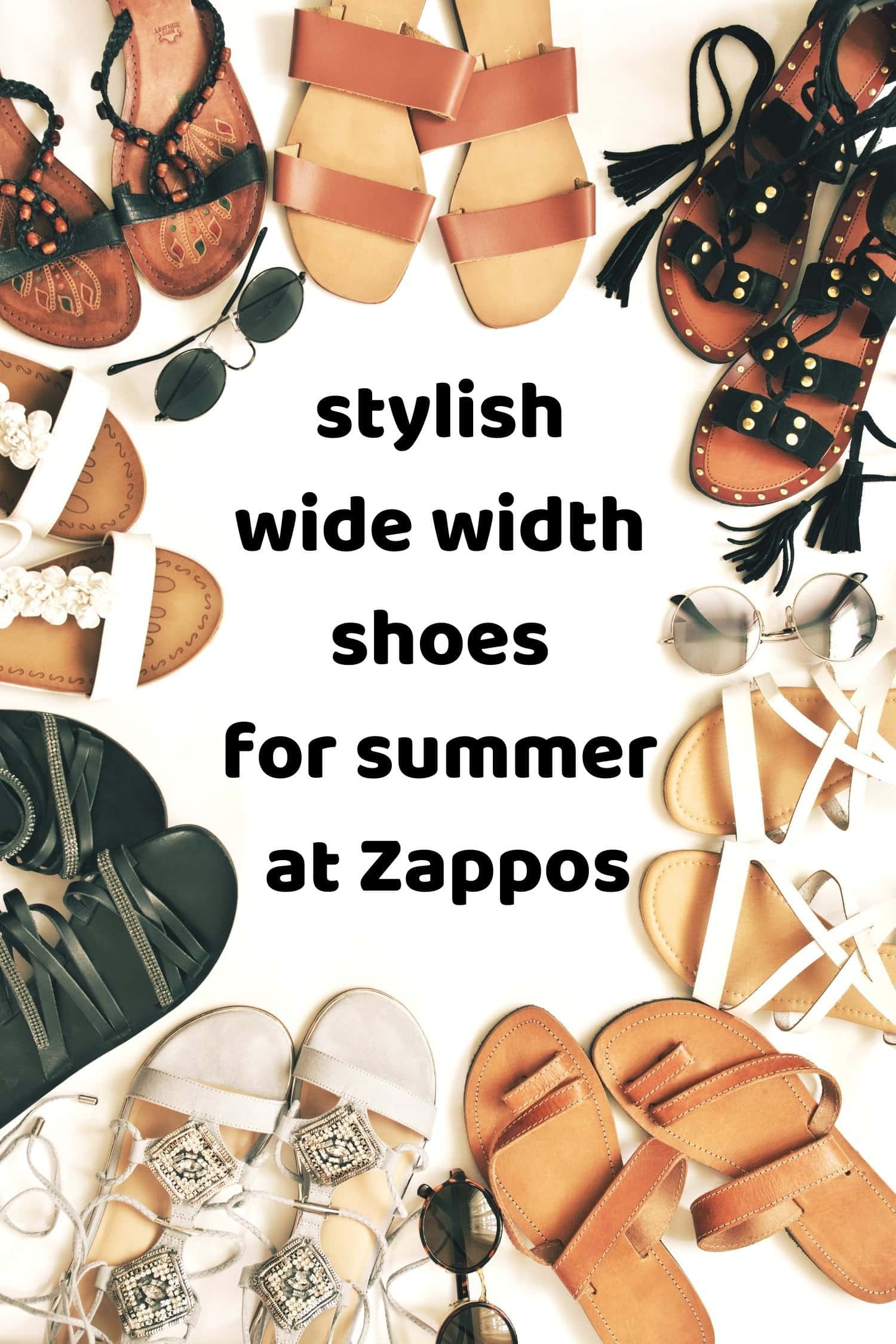
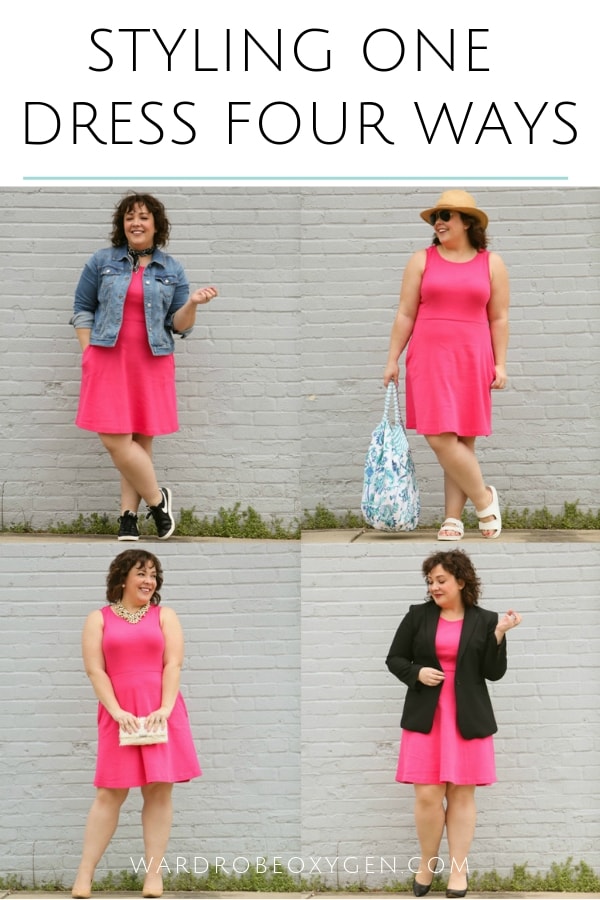
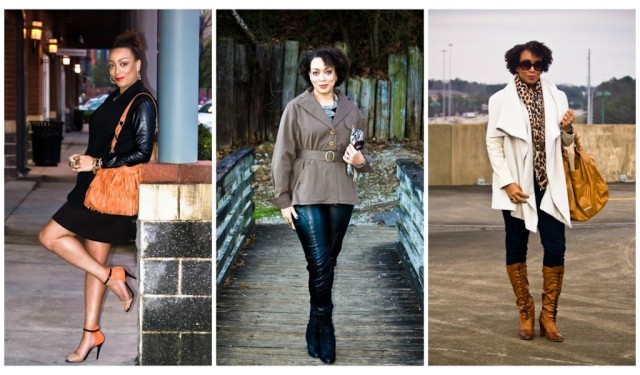
Hey Allie,
Thanks for answering my question!
A few weeks later… I’ve been sticking with colour in my outfits as it’s what makes me the most cheerful! (but am continuing to keep it to mid-toned similar colours so the effect is less brash than full-on colour blocking).
I am definitely starting to subscribe to the view that if the fabrics and shapes are formal, that some tactful use of colour is just fine. Plus I’ve had a couple of compliments on outfits, so I figure my colleagues must appreciate it!
It was really good to read your advice though, which kept me feeling confident when meeting up with some of the other black/grey/nude-coloured interns!
Also many thanks to @88a8641450670493d021e5f35882caf7:disqus for the comment! Glad to see other banking
back office staff enjoy a colourful outfit too 🙂
Emily
I work in the technology section of a really large bank and yes, colors are allowed! That’s the norm. When I meet the business, then I wear a jacket or cardigan if its an informal meeting. But colors, yes!
Having said that, I’d probably leave 1 / 3 / 4 out of business casual for a corporate office. That’s just my personal opinion. I do like these outfits, but I think too much color blocking going on.
I would definitely look at what others are wearing at the firm taking note to look at the more senior staff and well-respected women at the firm. As suggested below. Especially if you are hoping for a full time offer with the firm after your internship. Dress for the job you want, not the one you have. None of the styles in the photos above except for the purple shift, white skirt would be appropriate for my firm, but we tend to be a little bit more formal than business casual. And suits are always expected if you are meeting with clients. There are definitely some guys who wear chinos and polos, but they are the ones happy in their current position. Not the ones looking to advance.
My pleasure!
Good point!
I would say to take cues from the women higher up on the food chain; if they’re not wearing colours, it could be a problem. Or start with darker colours and work your way into the brights.
Hey, thanks for the inclusion. Great question, great answer!